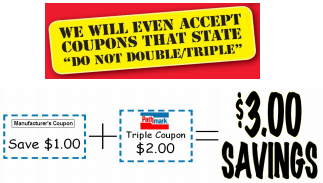Do you remember when you would cut coupons to get a small rebate at the store? Well, some things have certainly changed since then, because smartphones are becoming increasingly ever more prevalent:
nearly 18 percent of US smartphone subscribers use mobile check-in services
A recent study reported all sorts of interesting data about US smartphone users:
- – 31 percent access in-store coupons,
- – 29 percent look for competitive pricing on Amazon.com,
- – 26 percent compare prices at other retailers,
- – 44 percent use a locator app before entering a store,
- – 40 percent check for sales and specials,
- – 37 percent browsing an online store for products of interest, and
- – 36 percent seek product ratings and reviews.
Download the study: Freedman, Lauren (March 2011). The shopping mindset of the mobile consumer. Chicago, IL: the e-tailing group (sponsored by Coffee Table). Retrieved May 18 2011, from http://www.shopcoffeetable.com/wp-content/uploads/2011/05/e-Tailing-Whitepaper-March-2011.pdf
Methodology and sample
On page 4, the report states, “An online survey was fielded in February, 2011 targeting shoppers who spent US$250 or more online annually; currently owning a smartphone and/or a tablet… ”
- Article source:
Smartphone shoppers: What about coupons?
I asked the author directly for some more information; this came back via email:
- “Online survey fielded to consumers in February 2011 using Zoomerang’s consumer panel. All of them responded thus data is based on that group and subdivided by device level which is noted… It is very difficult to even secure this level of panelist given the early nature of these technologies as I’m sure you can appreciate.”
- “…the way Zoomerang is set up you request a number to complete the survey rather than sending to a blanket list, where response rate would be an important metric. We’re simply seeking out the response of 1000 users.
The above makes clear that this study’s consumer panel is not representative of US smartphone users, nor does it tell us the response rate (e.g., how many participants saw the survey but failed to fill it out).
This is why you want to download our free eBook: so you can discern such issues when the next research report comes across your desk.
Raise your hand if you hate research. ComMetrics eBook series #2011-01 (783 KB – pdf file)
Bottom line and take-aways
 Given the accelerating diffusion of smartphones around the world, the above is a nice survey on an increasingly important topic, but how this might play out in Europe is unclear. To illustrate, retailers are far less likely to offer discount coupons for your next toothpaste purchase like the Triple Coupon.
Given the accelerating diffusion of smartphones around the world, the above is a nice survey on an increasingly important topic, but how this might play out in Europe is unclear. To illustrate, retailers are far less likely to offer discount coupons for your next toothpaste purchase like the Triple Coupon.
Tip: Get more insightful posts from us about privacy regulation, customer engagement, customer relationship management and benchmarking by adding CyTRAP Labs to your search query.
Most Europeans, myself included, use three criteria to decide where to shop:
- 1.
Geographical proximity, convenience and preferences
- : Being able to stop there on the way to and from work is important and most people have a favorite shop for groceries, clothing or electronics.
- 2.
Price comparison studies
- : Consumer advocacy groups conduct widely publicized studies about who offers the lowest price for a shopping basket of 100 items ranging from toiletries to produce. This might make you shop at Store A for dairy products while going to Store B for cleaning supplies.
- 3.
Grocery versus other
- : When I need a new PC, digital TV or car, I read product tests and reviews on the Internet, such as
- or
- (see bottom of posts; also
- ). Then I decide based on price and convenience to either shop online or in a store. But, for great quality produce at a good price I continue to shop at my favorite corner store. I neither have the time nor the patience to check if the retailer a few blocks away offers my lettuce 10 cents cheaper.
So how much do you think in-store checking really matters in Europe? How often do you check pricing or in-store offers on your smartphone when you enter the store?
How will this affect your business? Are you aware of other studies from other countries regarding smartphone use and shopping? Please leave a comment.
How we help
CyTRAP Labs helps NGOs, non-profits and brands engage their target audience through social media by assisting with development of an effective social media strategy and mentoring through the implementation process, conducting social media audits and supporting your efforts regarding corrective actions and improvements.
Start a conversation! Email us at info [at] CyTRAP [dot] eu or call us at +41 (0)44-272-1876.
Pingback: World Economic Forum
Pingback: SocialCRM Eqentia
Pingback: World Economic Forum
Pingback: Urs E. Gattiker